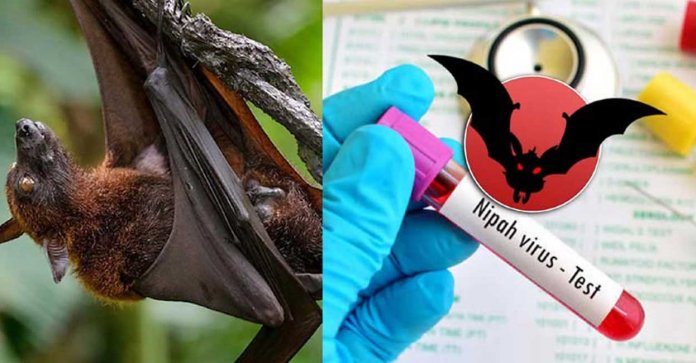In recent weeks, the state has made national headlines for having the greatest number of daily COVID-19 cases in India. Kerala had approximately 20,000 COVID-19 infections on September 6th, out of India’s daily total of 31,222.
Concern is compounded as a 12 year old boy infected with the Nipah virus died on 5th September in Kerala’s Kozhikode district. The boy presented symptoms of encephalitis and myocarditis — inflammation of the brain and heart muscles respectively.
Key Points
The Nipah Illness has put Kerala on high alert as the number of cases of the virus in the state’s Kozhikode district increased to 11 from two the day before.
Kerala’s Health Minister, Veena George, said the State Health Department has identified and separated 250 people who had come into touch with the 12-year-old body that had died from Nipah Virus infection.
According to the Health Minister, 11 out of 38 persons at the Kozhikode Medical College Hospital have developed symptoms and have been placed in isolation. The 8 primary contacts’ samples had come back negative.
Central team visited Kozhikode
On September 5, 2021, a Central team arrived in Kozhikode district after a 12-year-old kid died after contacting the Nipah Virus. To determine the origins of the virus, the researchers also gathered samples of Rambutan fruits from the surrounding area.
According to the official statement, a sample of Rambutan fruits can assist in determining the source of the virus and will confirm whether the infection was transmitted by a bat.
The Central team in Kerala has questioned the deceased’s family and close friends in an attempt to determine what food he ate and what animals he may have come into touch with.
What is the Nipah virus (NiV)?
- The Nipah virus is a zoonotic virus, meaning it has been passed from animals to humans.
- The animal host reservoir for NiV is the fruit bat (genus Pteropus), which is commonly known as the ‘flying fox’. Infected fruit bats can spread the disease to other animals as well, such as pigs — and also dogs, cats, goats, horses and sheep. It spreads from bats to humans, dogs, and horses, among other animals.
- Humans become infected by coming into direct contact with these animals or eating food contaminated with their saliva or urine.
- Nipah Virus was first identified in 1998 during an outbreak of the disease that took place in Kampung Sungai Nipah, Malaysia.
- Along with respiratory illness, the deadly virus results in headaches, muscular pain, nausea, dizziness, and fever. If the disease is not treated, it might lead to brain fever, which can be fatal. The Nipah virus has a fatality rate of 40-75%.
- According to the World Health Organization, up to 75% of Nipah infections prove fatal. The mortality rate for the coronavirus, by comparison, is believed to be about 2%. About 20% of survivors experience neurological symptoms that can persist, including seizures and personality changes.
NiV cases in India
The first outbreak in India hit Siliguri in West Bengal in January-February 2001. A total 66 cases were reported, with a high mortality rate of 3 out of every 4 infected persons.
In 2007, the virus returned to India, infecting around 50 people in the district of Nadia bordering Bangladesh. Around five people were reported to have died of the disease.
Nipah became widely known in India in May-June 2018, when 18 confirmed cases were reported in Kozhikode, of which 17 resulted in death. The infection was confirmed for the first time in Kerala in 2018 with the blood and body fluid samples of two individuals who had died of viral fever.
Instructions issued by the Central Team
- The Central team has advised everyone to be extremely cautious and report any similar symptoms to health specialists as soon as possible.
- The National Centre for Disease Control team has directly instructed the locals on the protocols to be followed in their homes as well as surroundings.
- Within a three-kilometer radius of the Nipah Virus victim’s home in Kozhikode, strict precautions have been established.
- Locals have been instructed to follow the immediate public health measures. It will entail active searches in the victim’s family, village, and similar geographic areas, as well as active contact tracing over the past 12 days.
- The Central team has also ordered a strict quarantine of the contacts, isolation of any suspects, transportation, and the collecting of samples for lab testing.
- The Central team has defined the specific locations as a containment zone. Similar precautionary measures have been issued in the neighbouring districts of Kozhikode, Kannur, and Malappuram.
With this we come to the end of this blog. There is no vaccine for the virus.The only treatment is supportive care to control complications and keep patients comfortable.
Stay tuned with hranker.com for more updates!
Also Check – Karnataka Government State Mental Health Authority




